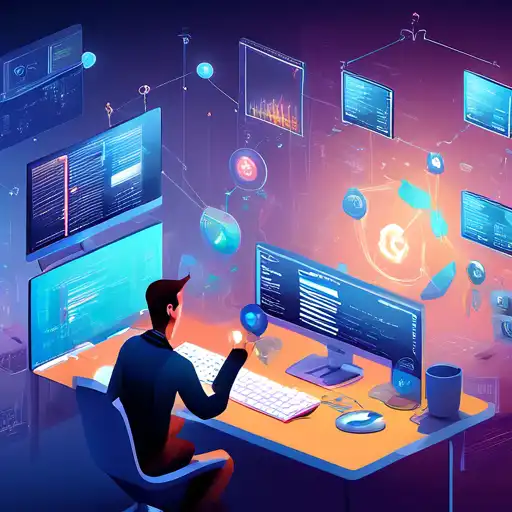Introduction to Software Development Trends
As we navigate through the year, the software development landscape continues to evolve at a rapid pace. Staying ahead of the curve is crucial for developers, businesses, and tech enthusiasts alike. This article delves into the most significant software development trends that are shaping the industry this year.
1. Artificial Intelligence and Machine Learning Integration
The integration of Artificial Intelligence (AI) and Machine Learning (ML) into software development is not just a trend; it's becoming a standard. From automating mundane tasks to enhancing user experiences, AI and ML are at the forefront of innovation. Developers are increasingly leveraging these technologies to create smarter, more intuitive applications.
2. The Rise of Low-Code and No-Code Platforms
Low-code and no-code platforms are democratizing software development, enabling non-technical users to build applications with minimal coding knowledge. This trend is accelerating digital transformation across industries by making app development more accessible and cost-effective.
3. Progressive Web Apps (PWAs) Gain Momentum
Progressive Web Apps (PWAs) continue to gain popularity due to their ability to offer a native app-like experience on the web. With features like offline functionality, push notifications, and fast loading times, PWAs are becoming a preferred choice for businesses looking to enhance their online presence.
4. The Increasing Importance of Cybersecurity
As software becomes more integral to our daily lives, the importance of cybersecurity cannot be overstated. Developers are prioritizing secure coding practices and incorporating advanced security measures to protect against evolving threats.
5. The Adoption of DevOps and Agile Methodologies
DevOps and Agile methodologies are becoming increasingly adopted in software development projects. These approaches promote collaboration, efficiency, and faster delivery times, making them essential for teams aiming to stay competitive.
6. The Growth of Cloud-Native Technologies
Cloud-native technologies are transforming how applications are developed, deployed, and managed. By leveraging containers, microservices, and serverless architectures, developers can build scalable and resilient applications that meet the demands of modern users.
7. The Expansion of the Internet of Things (IoT)
The Internet of Things (IoT) is expanding its reach, connecting more devices and creating new opportunities for software developers. From smart homes to industrial automation, IoT is driving innovation and requiring developers to adapt to new challenges and opportunities.
Conclusion
The software development industry is in a constant state of flux, with new trends emerging each year. By staying informed and adaptable, developers and businesses can leverage these trends to create innovative solutions that meet the needs of today's digital world. Whether it's through AI, low-code platforms, or cloud-native technologies, the future of software development is bright and full of potential.
